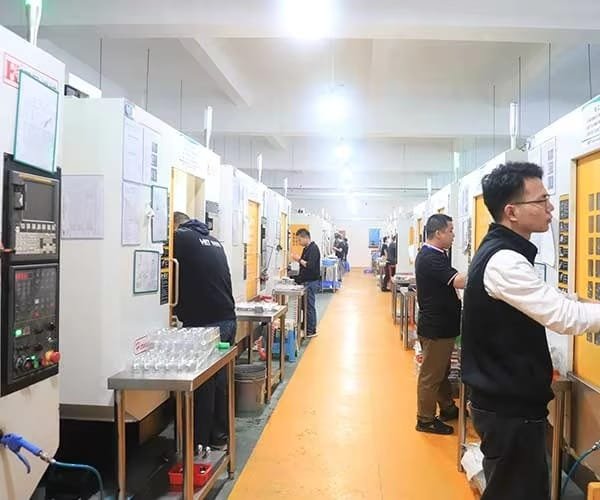High Density Polyethylene (HDPE) is a versatile material frequently used thermoplastic material with exceptional strength, durability, and chemical resistance. Working with HDPE requires knowledge of its melting temperature since this characteristic of flexible material directly affects its processing, performance, and uses. This whole tutorial looks at HDPE’s melting and temperature range, factors influencing it, and practical material management tips.
What is High Density Polyethylene (HDPE)?

HDPE is one type of polyethylene unique in great density and strength. Low-pressure methods polymerize it such that the polymer chains pack closely together physical properties. Low moisture absorption, impact resistance increased strength, density and remarkable toughness this structure provides for HDPE.
HDPE finds frequent application in:
- Plastic boxes
- Pipework:
- Storage containers and bins
- Toys and household items
- Applications in industries including chemical tanks and liner.
- automotive gasoline tank.
- In agricultural as well as building, geomembranes
- Food storage containers based on non-toxic properties
High-density polyethylene (HDPE) is one odd variation of polyethylene identified by its linear molecular structure. This closely packed molecular arrangement produces the remarkable strength, high, tensile strength and properties, and amazing impact resistance of HDPE. One of the most strong types of polyethylene available on the market, HDPE’s linear design helps to maintain exceptional rigidity. Apart from these mechanical benefits low density polyethylene, HDPE may be made to have better UV resistance and is rather chemically resistant. High tensile strength and combined properties of HDPE make it a flexible material widely employed in many different fields.

The simplicity of manufacturing of HDPE adds to its versatility and makes it the ideal material for creating complex constructions and unique designs. Because of its great malleability and dimensional stability, HDPE is utilized extensively in outdoor furniture, leisure equipment, and structural installations including playground systems. Furthermore, HDPE’s robustness makes it a favored material in industrial applications when strength and chemical resistance are absolutely critical. Manufacturing pipe flanges, chemical storage tanks, and heavy-duty liners across many different sectors makes great use of HDPE. Beyond industrial use, HDPE is found in typical consumer items including food and other food packaging, beverage bottles plastic bags and containers.
Understanding the Melting Temperature of HDPE

For various manufacturing processes and uses like injection molding, extrusion, and welding linear structure
, HDPE’s rather low temperature and melting point makes it ideal. Usually running between 120°C and 130°C (248°F and 266°F).
Factors Influencing HDPE Melting Temperature
Several factors can affect the melting point of HDPE and the precise temperature range:
1. Molecular Weight
increased yield and molecular weight Tensile strength and heat resistance of HDPE have generated questions. This may somewhat alter the particular melting points and material behavior even while it strengthens it.
2. Crystallinity
HDPE’s melting degree range is highly influenced by high degree range of crystallinity medical devices
. Usually, better crystallinity raises the melting point, so material stiffness and chemical resistance must be enhanced.
3. Additives and Fillers
Manufacturers may utilize additives to alter the different types of properties of HDPE properties. For example, UV stabilizers, colorants, and antioxidants could somewhat alter the melting characteristics of the material. Moreover, chemicals other materials meant for specific application help to increase heat resistance and flexibility.
4. Manufacturing Techniques
Processing method used to generate HDPE products can influence the structural characteristics of the material produced, particularly melting behavior under heat. Variations in temperature range the cooling rates of additive manufacturing can alter the crystalline structure, therefore affecting the melting behavior grocery bags
.
HDPE Melting Process in Industrial Applications
Knowing the specific melting points and behavior of HDPE can help you to achieve best results in your production operations. These striking qualities should enable you to consider:
- Injection Molding: HDPE is heated under the molding process to ensure suitable flow and filling of molds between 180°C and 260°C (356°F and 500°F). Temperature control guarantees constant material distribution in complex molds.
- Extrusion: HDPE is extruded with steady material flow usually between 160°C and 210°C (320°F and 410°F). Correct heat control avoids unequal product thickness.
- Welding and Joining: Plastic welding heats HDPE parts to their melting point, then fuses them to provide durable welds. Mostly employing butt fusion welding and other methods, HDPE pipe joining is done.
Applications of HDPE and Its Melting Point Importance

The capacity of HDPE plastic to melt and reconstruct without compromising structural integrity is fundamental for its success in numerous applications:
- Pipes and fittings: HDPE pipes are frequently linked utilizing accurate melting temperature dependent heat fusion methods. These pipelines find use for gas distribution, sewage, potable water systems, and potentially hazardous materials.
- Heat resistance of HDPE guarantees safe application in packaging for products needing sterilizing or hot filling. Here also find useful durable containers, milk jugs, and detergent bottles.
- Though less prevalent in 3D printing, HDPE’s low melting point allows effective extrusion in specific printing environments—particularly for the manufacture of custom molds.
- Construction and Agriculture: HDPE’s chemical and environmental stress resilience makes it useful as ground liners and geomembranes.
Handling HDPE Safely During Melting

Following safety protocols guarantees safe handling and helps to avoid disasters while working with HDPE:
- In workplaces, ensure suitable ventilation to lower any exposure to possibly harmful vapors from overheating.
- To prevent burns, don gloves, goggles, and other protective gear. Particularly useful are heat-resistant gloves.
- Use calibrated equipment to prevent overheating, which might destroy HDPE and release harmful emissions.
- After heating, let HDPE goods cool gently to prevent warping or uneven crystallization.
Common Issues When Heating HDPE

Problems can arise during melting or heating even using proper techniques. Common challenges include:
- Excessive heat might lead to HDPE burning or becoming brittle, therefore weakening the resulting product.
- Uneven heating could cause defects in molded objects, therefore generating weak spots or poor surface finishes.
- Extended high temperature exposure compromises the molecular structure of HDPE, therefore reducing its performance in mechanical applications.
- Improper cooling techniques can cause HDPE products—especially those with thin walls or complex forms—to bend or shrink.
Practical Tips for Working with HDPE

Use these sensible advice to guarantee effective manufacturing method, final product processing process and best product quality:
- Use Precision Equipment: Calibrated heating tools and temperature controls help to increase accuracy during melting and forming.
- Monitor Cooling Times: Gradual cooling techniques improve product stability and help to lower internal stress.
- Inspect Material Quality: High-grade HDPE will help to lower the risk of contaminants influencing melting consistency.
- Train Personnel: Minimizing safety risks and production mistakes, staff members should be well-trained in HDPE handling, heating, and welding techniques.
Conclusion
Industries depending on High Density Polyethylene must know its melting point if they are to operate. HDPE plastic can be properly molded, extruded, or welded for many different types of uses by keeping temperatures between 120°C and 130°C (248°F and ensuring correct handling techniques). Understanding HDPE’s thermal behavior will improve product quality, yield and durability whether your industry is manufacturing, packaging, or construction. durability.

